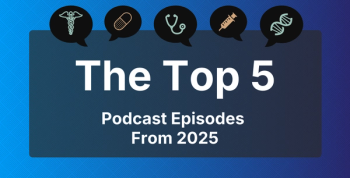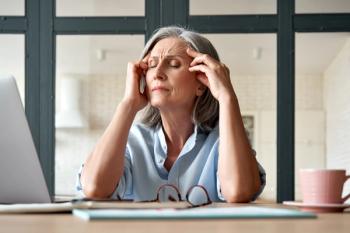
Dr Peter McAllister Shares How COVID-19 Altered Patients' Migraine Symptoms
While migraine was more manifest in some patients during the pandemic, others were able to adopt healthier habits, said Peter McAllister, MD, a neurologist, board certified headache specialist, and medical director of the New England Institute for Neurology and Headache.
While migraine was more manifest in some patients during the pandemic, others were able to adopt healthier habits, said Peter McAllister, MD, a neurologist, board certified headache specialist, and medical director of the New England Institute for Neurology and Headache.
Transcript:
The American Journal of Managed Care®(AJMC®): Has coronavirus disease 2019 (COVID-19) affected care utilization in your practice?
Dr. McAllister: It did just at the very height of it in March and April. We made a decision in this practice, not to close our doors. I just felt that it was unethical to turn away patients who have truly disabling incapacitating pain. We took a lot of precautions, and instituted a lot of things. We've only loosened them up slightly now that the numbers in the greater metro New York area are down. For a while, patient numbers really dried up. We've seen that among multiple specialties. Patients are not taking care of themselves, because they may have a fear of going out or exposing themselves in a pandemic. The point is, though, that migraine not only doesn't go away during a pandemic, migraine is often more manifest and patients are more symptomatic. So what we saw then, is after the height of it, the worst of the worst, there was a big uptick in the number of patients we see.
AJMC®: Some studies found that due to the pandemic, migraine triggers like work or school have been removed, leading to less frequent attacks. Can you share your thoughts on these findings?
Dr. McAllister: Yes, it is sort of a biphasic thing. You're right. Many of my patients went up for reasons I described. But some folks said, 'Boy COVID-19 has been great for my head.' They changed their sleep schedule, but for them that means getting more sleep because they didn't have a 2 hour commute into Manhattan, for example. Some folks who were eating on the run were actually spending time preparing healthy meals for themselves. Those who weren't getting exercise, some decided to do online yoga classes and meditation and things. I think that is a bit more of a minority than the group that got worse. But there are some who, just in fact, my school age kids, many of them are worse being at home on Zoom. But some of them who kind of have anxiety of being around their peers, a social anxiety thing that actually worsens their migraines, they loved being home. So yeah, it was a bit of a mixed picture.
Newsletter
Stay ahead of policy, cost, and value—subscribe to AJMC for expert insights at the intersection of clinical care and health economics.








































